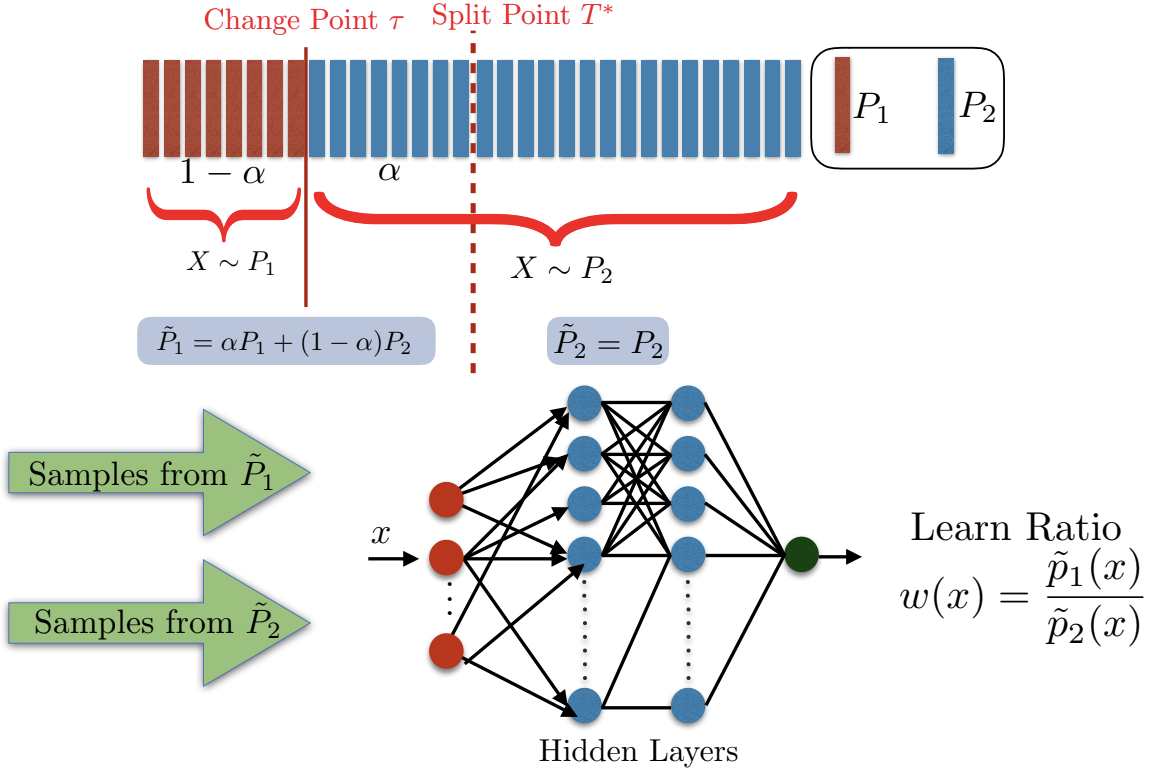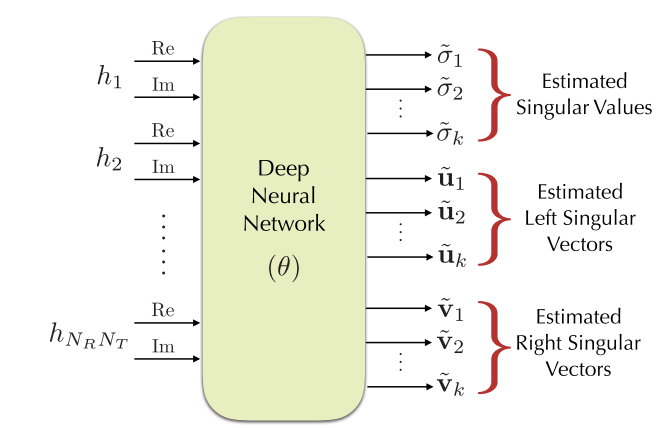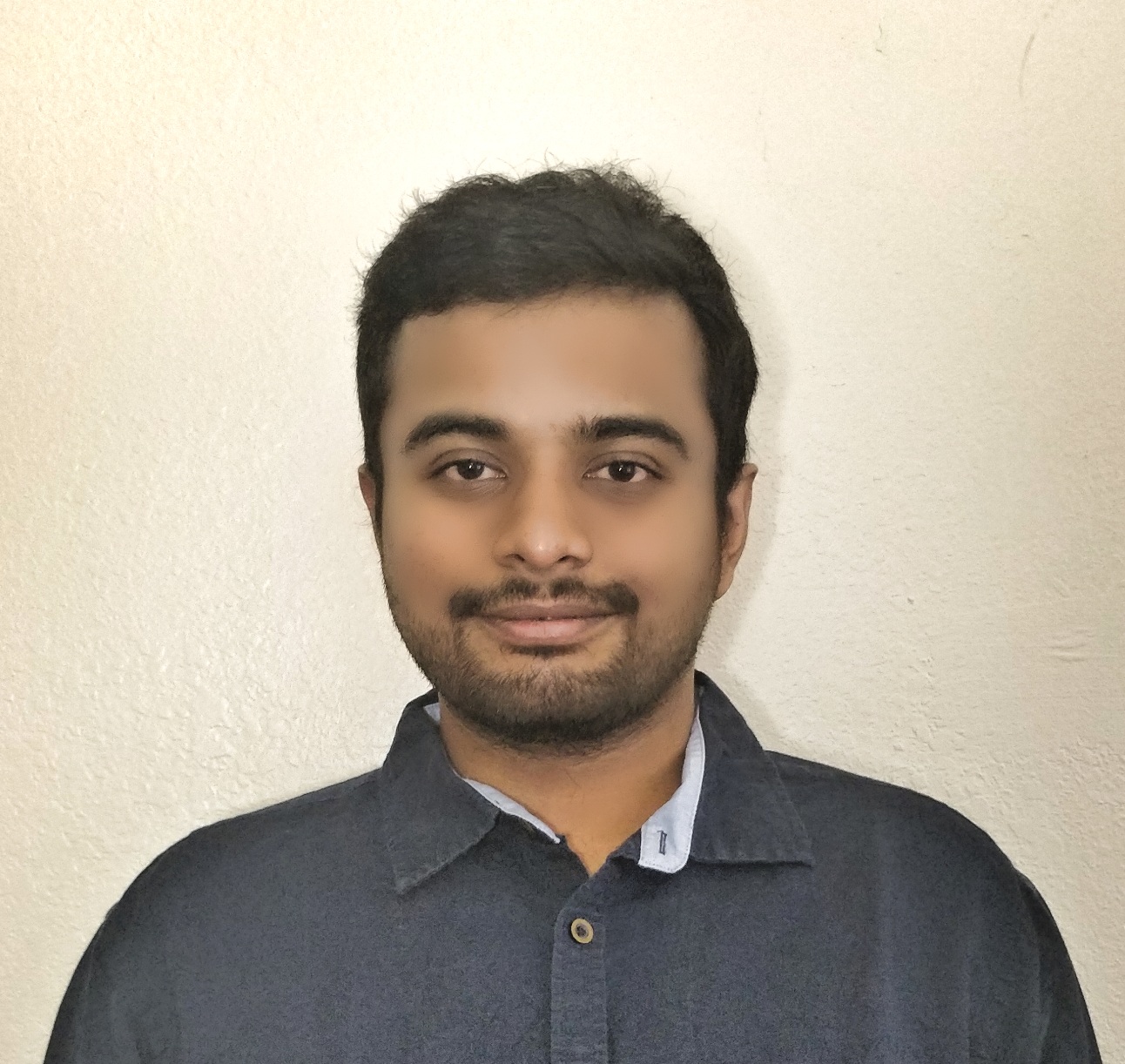|
Sudarshan Adiga
Biography and Current Research
I am currently pursuing my Ph.D. at the Department of Electrical and Computer Engineering, University of Arizona.
I received my M.S. degree in ECE from the University of Arizona in 2019, and my B.E. degree from Ramaiah Institute of Technology, Bangalore in 2015.
My advisors are Dr. Ravi Tandon, and Dr. Tamal Bose.
My current research interests are in the interesection of Machine Learning, Information theory, and Wireless Communications.
Research Overview
 |
Machine Learning for Unsupervised Change Detection
In this work, we present an unsupervised density-ratio estimation based approach to determine statistical changes in time-series data when no knowledge of the pre-and post-change distributions are available. The core idea behind the proposed approach is to split the time-series at an arbitrary point and estimate the ratio of densities of distribution (using a parametric model such as a neural network) before and after the split point. The change detection statistic is then derived from the cumulative sum (CUSUM) of the logarithm of the estimated density ratio. The simplicity of the proposed framework makes it readily applicable in various practical settings which was experimentally shown.
|
 |
Machine Learning decoders for 5G and beyond
In this work, new coding techniques were designed for Ultra Reliable Low Latency Communications (URLLC), with the goal of achieving higher reliability, and
low decoding complexity. My first contribution was Sparse Matrix Codes, where the message bits are mapped to a sparse matrix, which is then multiplied by a spreading matrix and transmitted over the communication channel over time-or frequency resources.
The low-decoding complexity algorithm which is derived by leveraging and adapting tools from 2D compressed sensing recovers the message from the channel output.
|
 |
Deep Learning for Singular Value Decomposition and Beamforming for MIMO communications
In this work, a deep learning approach to compute the SVD for obtaining beamformers of a transceiver was proposed. This is based on the result that optimal unconstrained beamformers (which maximize channel capacity) can be found through the SVD of the channel.
We present three deep neural network (DNN) architectures to approximate the SVD, and show that DNN based hybrid BF improves rates by up to 50 - 70% compared to conventional hybrid BF algorithms and achieves 10 - 30% gain in rates compared with the state-of-art ML-aided hybrid BF algorithms.
|
 |
Generative Adversarial Networks
The goal of this work was two-fold: 1. performance metrics for quantifying the performance of a GAN architecture, 2. a new framework and training
methodology for Generative Adversarial Networks (GANs) to tackle the mode collapse problem.
To quantify the performance of the GAN architecture, two new metrics to quantify the extent of mode collapse and the quality of generated samples were proposed.
|
|




